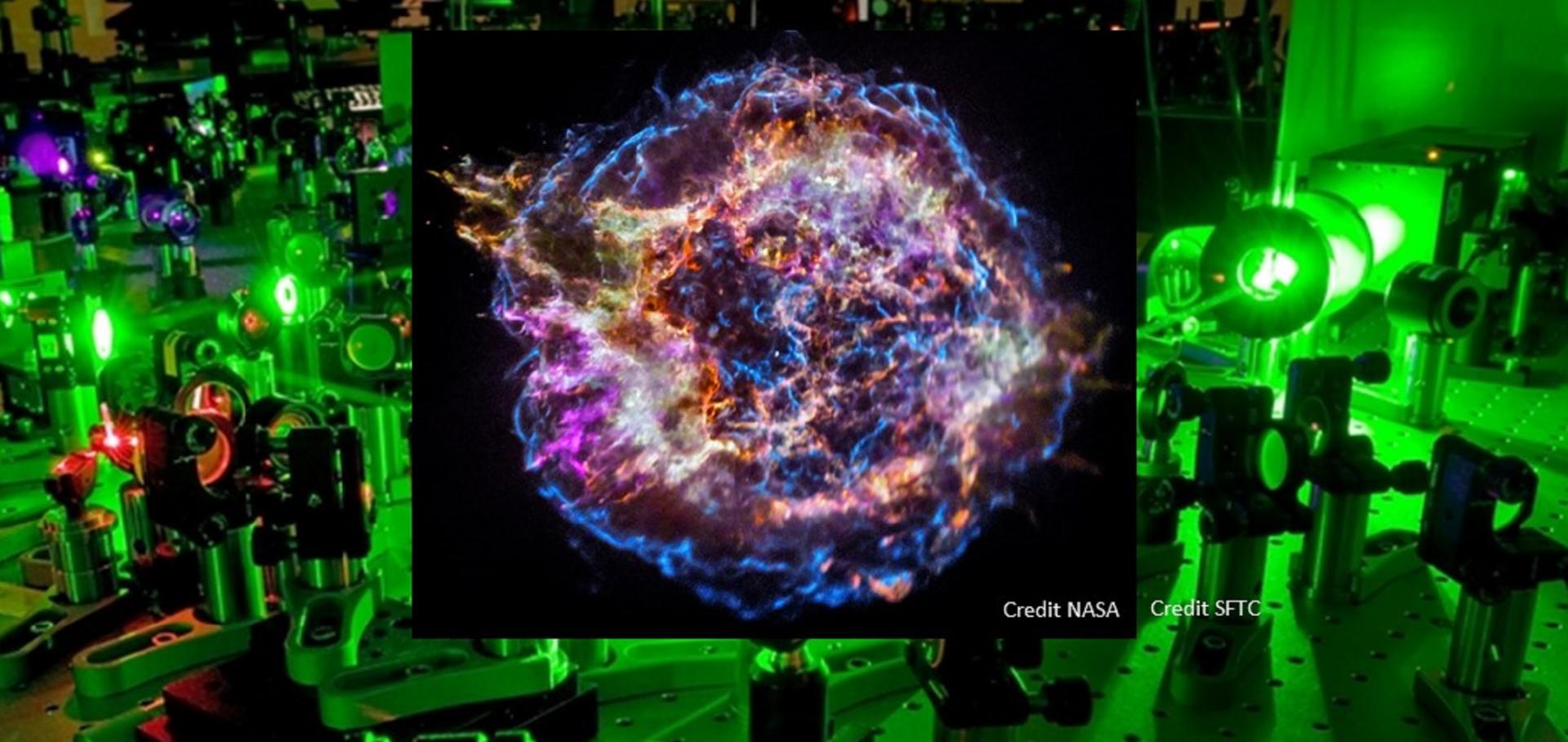Possibility of prolific pair production with high-power lasers.
Phys Rev Lett 101:20 (2008) 200403
Abstract:
Prolific electron-positron pair production is possible at laser intensities approaching 10;{24} W cm;{-2} at a wavelength of 1 mum. An analysis of electron trajectories and interactions at the nodes (B=0) of two counterpropagating, circularly polarized laser beams shows that a cascade of gamma rays and pairs develops. The geometry is generalized qualitatively to linear polarization and laser beams incident on a solid target.Self-similar solutions for the acceleration of cosmic rays at a supernova shock propagating into a circumstellar wind
International Journal of Modern Physics D 17:10 (2008) 1787-1793
Abstract:
Cosmic ray acceleration may occur at a supernova shock expanding into a circumstellar wind. Self-similar solutions for the cosmic ray distribution are derived firstly when diffusion is isotropic and secondly when the wind sustains a magnetic field in the form of a Parker spiral. © 2008 World Scientific Publishing Company.Supernova shock breakout from a red supergiant.
Science 321:5886 (2008) 223-226
Abstract:
Massive stars undergo a violent death when the supply of nuclear fuel in their cores is exhausted, resulting in a catastrophic "core-collapse" supernova. Such events are usually only detected at least a few days after the star has exploded. Observations of the supernova SNLS-04D2dc with the Galaxy Evolution Explorer space telescope reveal a radiative precursor from the supernova shock before the shock reached the surface of the star and show the initial expansion of the star at the beginning of the explosion. Theoretical models of the ultraviolet light curve confirm that the progenitor was a red supergiant, as expected for this type of supernova. These observations provide a way to probe the physics of core-collapse supernovae and the internal structures of their progenitor stars.Cosmic ray acceleration by a supernova shock in a dense circumstellar plasma
Monthly Notices of the Royal Astronomical Society 385:4 (2008) 1884-1892
Abstract:
Cosmic ray acceleration may occur at a supernova shock expanding into a circumstellar wind sustaining a Parker spiral magnetic field. Cosmic rays drift to the poles producing a large cosmic ray pressure which can generate polar density cavities through which cosmic rays escape upstream of the shock. This may be relevant to gamma-ray bursts accompanying shock breakout. © 2008 The Author. Journal compilation © 2008 RAS.Non-Spitzer return currents in intense laser-plasma interactions
PHYSICS OF PLASMAS 14:10 (2007) ARTN 102708


